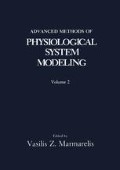Abstract
This paper applies the Wiener-Volterra method of system analysis to some simple simulated neural networks. It then shows that a broad class of more complicated systems can be decomposed into these simple networks and that the overall system Wiener-Volterra representation is the algebraic composition of the representations for the simple networks. A simulated neural network as used here consists of a collection of elements each of which has a relatively simple transfer function. These elements accept input from outside the system and from other elements, process it, and pass the resulting output to other elements and to the system output. The word neural in the name comes from the parallel, distributed nature of the system: the transfer functions of the elements are neither claimed nor constrained to match the transfer functions of nerve cells. However, by choosing the transfer function of the elements properly, these networks can be used as models for physiologic neural networks. Such simulated networks are useful in that by proper configuration they can mimic a wide range of systems and in some cases, by allowing a correction term to be fed back to modify the interconnections or the elements, the network can ‘learn’ the proper configuration itself.
Access this chapter
Tax calculation will be finalised at checkout
Purchases are for personal use only
Preview
Unable to display preview. Download preview PDF.
References
King,H., 1987, The Wiener Method of Non-Linear System Analysis Applied to Neural Networks and the Use of Neural Networks as Time Series Processors, in: “Report of Math Clinic on Neural Networks,”H. Greenberg, ed., University of Colorado at Denver,Denver,Co.
Marmarelis,P.Z.,and Marmarelis,V.Z., 1978, “Analysis of Physiological Systems: The White-Noise Approach,”Plenum Press, New York.
Rumelhart,D., and McClelland,J., 1987, “Parallel Distributed Processing, Vol 1 and 2,”The MIT Press, Cambridge, Mass.
Schetzen,M., 1980, “The Volterra and Wiener Theories of Nonlinear Systems,”Wiley, New York.
Author information
Authors and Affiliations
Editor information
Editors and Affiliations
Rights and permissions
Copyright information
© 1989 Plenum Press, New York
About this chapter
Cite this chapter
King, H. (1989). The Use of Wiener-Volterra Methods in the Analysis and Synthesis of Simulated Neural Networks. In: Marmarelis, V.Z. (eds) Advanced Methods of Physiological System Modeling. Springer, Boston, MA. https://doi.org/10.1007/978-1-4613-9789-2_15
Download citation
DOI: https://doi.org/10.1007/978-1-4613-9789-2_15
Publisher Name: Springer, Boston, MA
Print ISBN: 978-1-4613-9791-5
Online ISBN: 978-1-4613-9789-2
eBook Packages: Springer Book Archive

